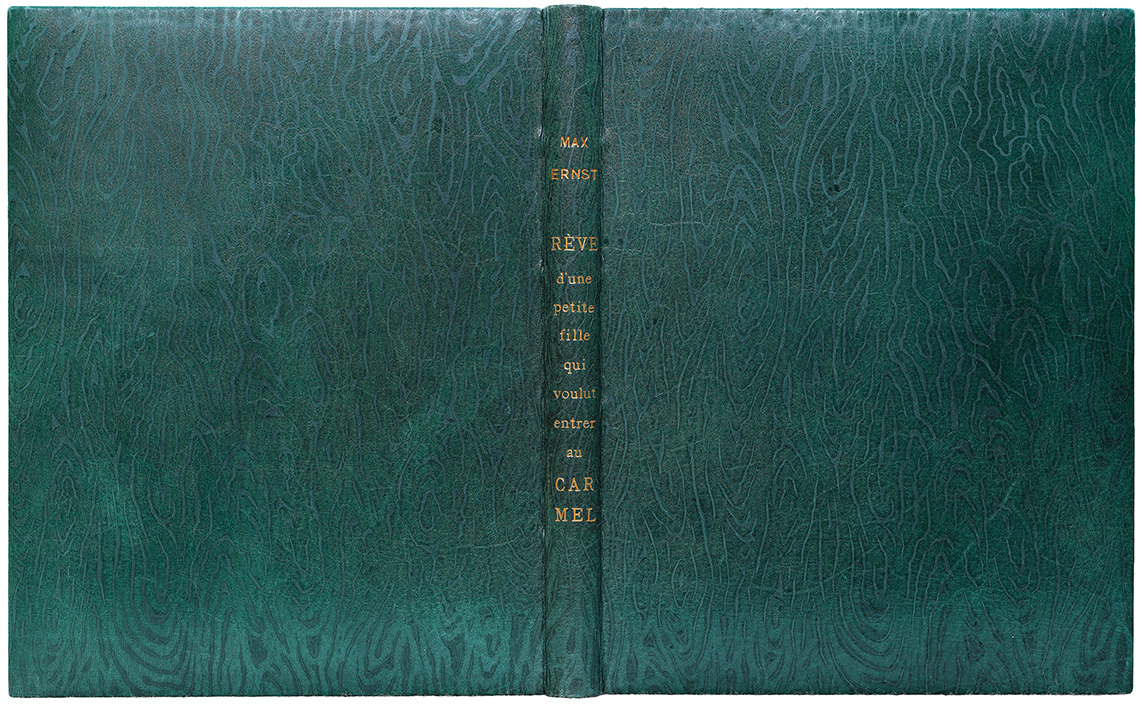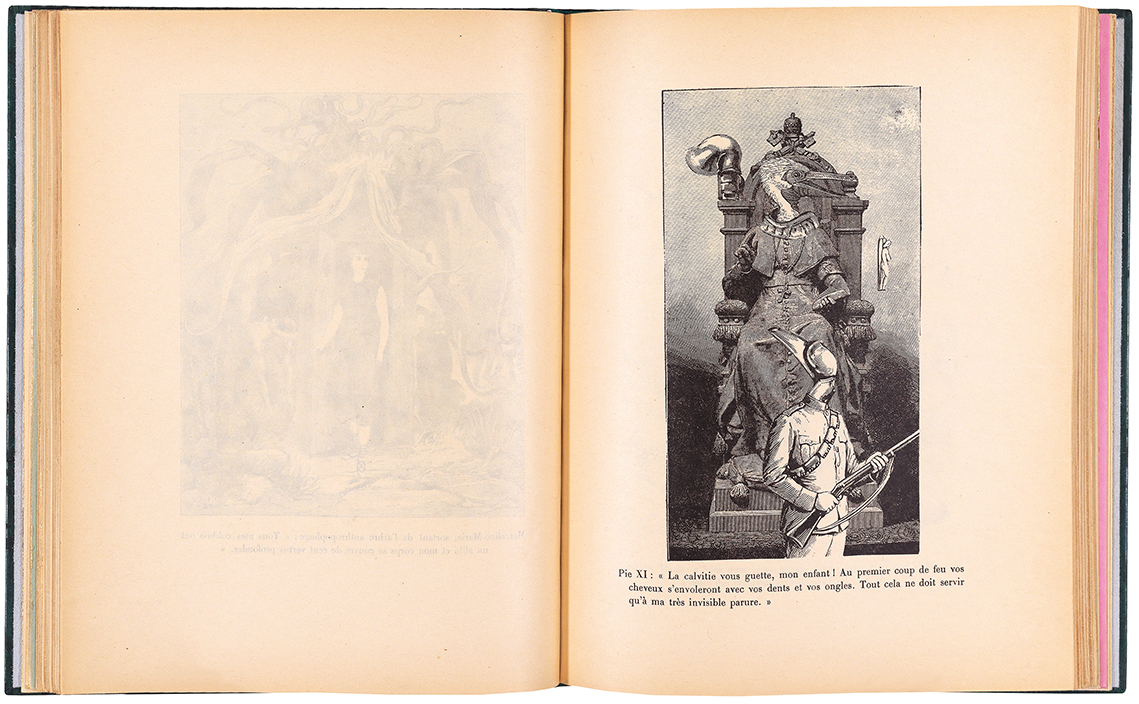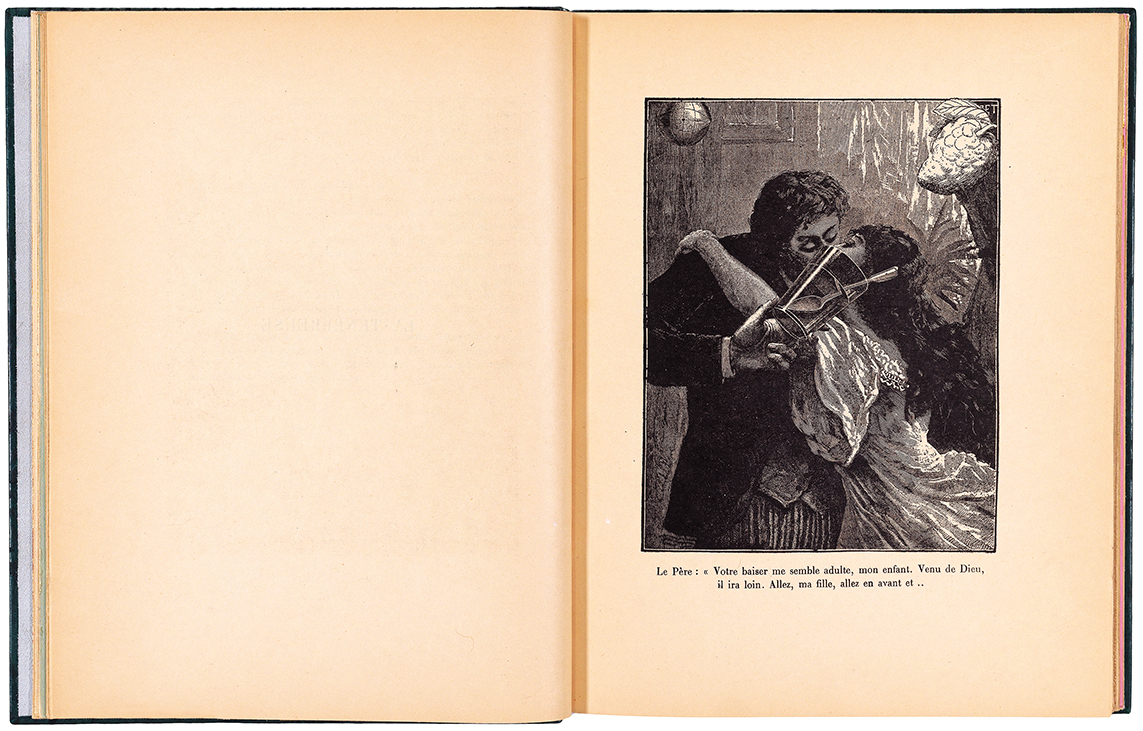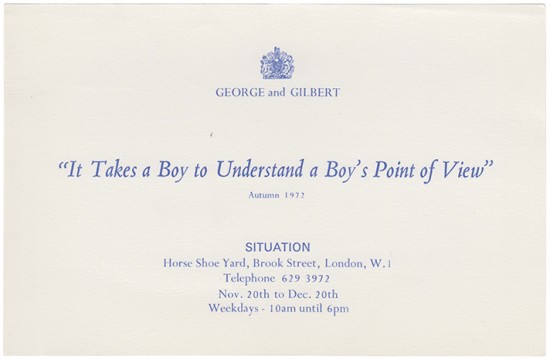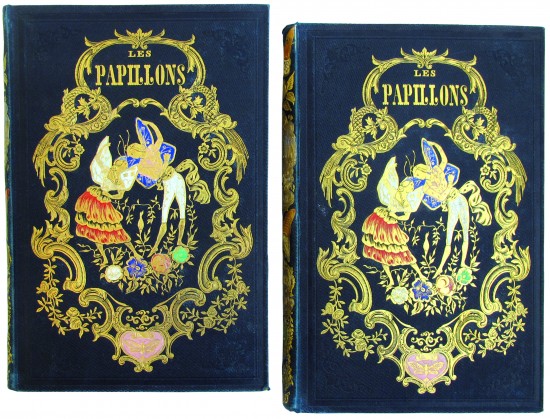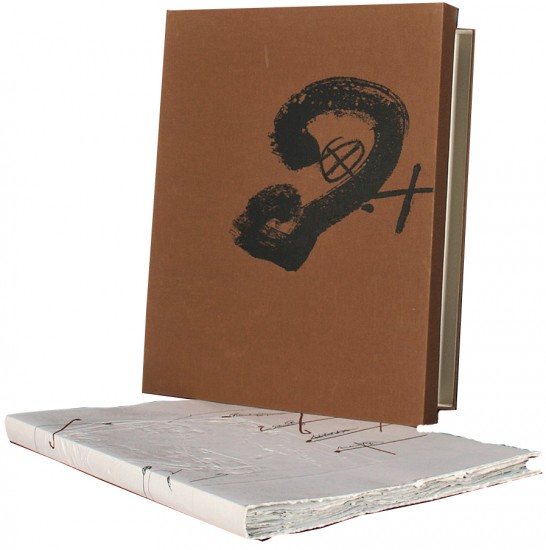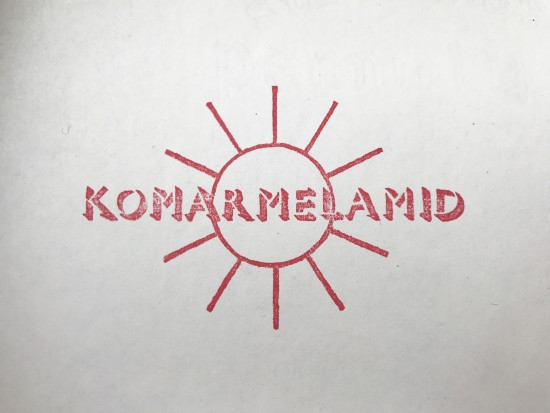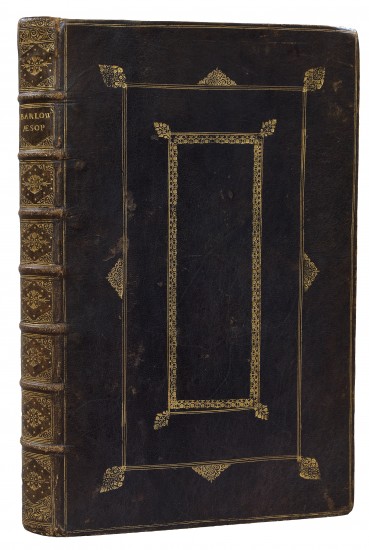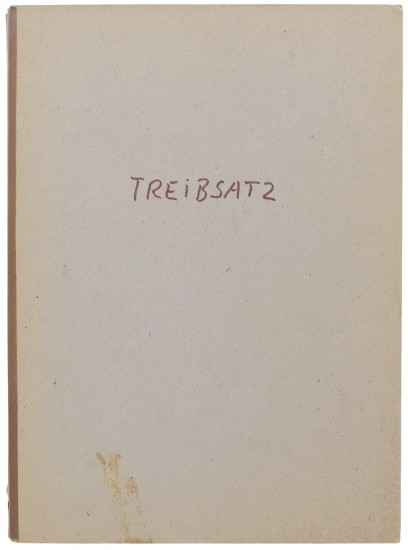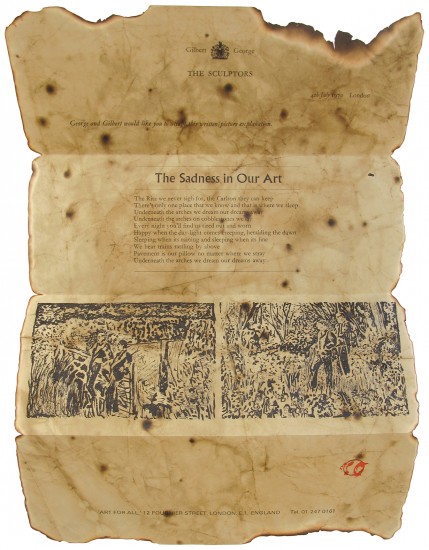Rêve d'une Petite Fille Qui Voulut Entrer au Carmel
Ernst, Max
Paris. Editions du Carrefour. 1930
Sold
An exceptional édition de tête example of Max Ernst's collage novel on Japon bound by Leroux.
From the edition limited to 1,063 numbered copies, with this one of 20 édition de tête copies on Japon Impérial numbered in Roman numerals in black ink on the justification ('20 ex. sur Japon Impérial, dont 17 numérotés de I à XVII et 3 ex. H. C., numérotés de XVIII à XX').
Also included, mounted to a tab at the rear of the volume, is the folded sheet of magenta card (234 x 165 mm) for the 1964 exhibition 'MAX ERNST / Collages, frottages, ready-mades (1919 - 1929)' at the Galleria Schwarz in Milan, where a number of Ernst's original collages for the present work were exhibited. The card reproduces the front cover of 'Rêve d'une Petite Fille Qui Voulut Entrer au Carmel', includes a reproduction of one of the collages within and a reproduction of the very early work 'Le mugissement des féroces soldats' to the rear.
Rêve d'une Fille Qui Voulut Entrer au Carmel is the second of Max Ernst's trilogy of Surrealist books with illustrations after his collages, the first was La Femme 100 Têtes (1929) and the third and concluding work, Une Semaine de Bonté (1934). Ernst had, prior to the publication of La Femme 100 Têtes in 1929, produced two books with similar illustration to accompany texts by Paul Eluard: Les Malheurs des Immortels and Répétitions. Both published in 1922 in small editions and with much smaller numbers of plates, neither book featured a tirage in large paper or édition de tête, a treatment that was only accorded to Ernst's suite of reproduction frottages of 1926, Histoire Naturelle before the publication of La Femme 100 Têtes.
The éditions de tête of Histoire Naturelle (25 copies) and La Femme 100 Têtes (12 copies) were, like the 20 édition de tête examples of Rêve d'une Petite Fille qui Voulut Entrer au Carmel, printed on Japon Impérial paper and it must be stated that each of these de tête printings are of the utmost scarcity in the market. We can locate only one example of each of these books in the édition de tête at auction: the Daniel Filipacchi copy of Histoire Naturelle, the René Gaffé / Edmée Maus / Renaud Gillet / Fred Feinsilber copy of La Femme 100 Têtes and the copy of Rêve d'une Petite Fille qui Voulut Entrer au Carmel from the collection of René Gaffé. That two of these three works were owned by René Gaffé, and only one by the great collector of Surrealism Daniel Filipacchi, is indicative both of the significance of Gaffé's stature as a collector and of the scarcity of copies of books such as these.
From the edition limited to 1,063 numbered copies, with this one of 20 édition de tête copies on Japon Impérial numbered in Roman numerals in black ink on the justification ('20 ex. sur Japon Impérial, dont 17 numérotés de I à XVII et 3 ex. H. C., numérotés de XVIII à XX').
Also included, mounted to a tab at the rear of the volume, is the folded sheet of magenta card (234 x 165 mm) for the 1964 exhibition 'MAX ERNST / Collages, frottages, ready-mades (1919 - 1929)' at the Galleria Schwarz in Milan, where a number of Ernst's original collages for the present work were exhibited. The card reproduces the front cover of 'Rêve d'une Petite Fille Qui Voulut Entrer au Carmel', includes a reproduction of one of the collages within and a reproduction of the very early work 'Le mugissement des féroces soldats' to the rear.
Rêve d'une Fille Qui Voulut Entrer au Carmel is the second of Max Ernst's trilogy of Surrealist books with illustrations after his collages, the first was La Femme 100 Têtes (1929) and the third and concluding work, Une Semaine de Bonté (1934). Ernst had, prior to the publication of La Femme 100 Têtes in 1929, produced two books with similar illustration to accompany texts by Paul Eluard: Les Malheurs des Immortels and Répétitions. Both published in 1922 in small editions and with much smaller numbers of plates, neither book featured a tirage in large paper or édition de tête, a treatment that was only accorded to Ernst's suite of reproduction frottages of 1926, Histoire Naturelle before the publication of La Femme 100 Têtes.
The éditions de tête of Histoire Naturelle (25 copies) and La Femme 100 Têtes (12 copies) were, like the 20 édition de tête examples of Rêve d'une Petite Fille qui Voulut Entrer au Carmel, printed on Japon Impérial paper and it must be stated that each of these de tête printings are of the utmost scarcity in the market. We can locate only one example of each of these books in the édition de tête at auction: the Daniel Filipacchi copy of Histoire Naturelle, the René Gaffé / Edmée Maus / Renaud Gillet / Fred Feinsilber copy of La Femme 100 Têtes and the copy of Rêve d'une Petite Fille qui Voulut Entrer au Carmel from the collection of René Gaffé. That two of these three works were owned by René Gaffé, and only one by the great collector of Surrealism Daniel Filipacchi, is indicative both of the significance of Gaffé's stature as a collector and of the scarcity of copies of books such as these.
[88 unnumbered leaves]. 4to. (238 x 192 mm). Half-title with justification verso, printed title, 2 leaves with illustration ('L'Académie des Sciences') and intoductory text, section titles for each part and illustrated with seventy-eight monochrome plates printed recto only by Ernst, each with printed caption, ('I - La Ténébreuse' with 22 plates, 'II - La Chevelure' with 25 plates, 'III - Le Couteau' with 21 plates, 'IV - Le Céleste Fiancé' with 10 plates), final leaf with achevé d'imprimer recto; sheet size: 234 x 184 mm. Full veined emerald crushed morocco by Georges Leroux with his signature gilt and dated '1987', smooth spine with copper titles, turquoise brushed suede doublures and endpapers, original turquoise printed wrappers and backstrip preserved, a.e.g., matching suede-lined calf-backed green cloth chemise with gilt title to spine and matching green cloth slipcase.
#47318
